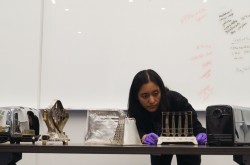Wringer Washer
This article was originally written and submitted as part of a Canada 150 Project, the Innovation Storybook, to crowdsource stories of Canadian innovation with partners across Canada. The content has since been migrated to Ingenium’s Channel, a digital hub featuring curated content related to science, technology and innovation.
The first home appliance.
Machines to wash clothes have been around since at least 1791. Yet the washing machine as we know it today can be traced to 1843. In that year, John Turnbull of Saint John, New Brunswick, added a wringer to a washing machine. The top roll of his wringer washer was spring-loaded to rise and fall to accomodate the thickness of the laundry running through the rolls. This mechanism, activated by turning a crank, meant continuous pressure was applied to wet clothes to squeeze as much water out of them as possible. This water would then fall directly into the water tub. No watery mess. With the device, homemakers could now not only wash clothes but also wring them dry – or at least drier than ever before. Not surprisingly, the wringer washer was a huge hit throughout North America. By 1940, 60 per cent of the 25 million American homes with electricity were equipped with an electric wringer washer – the first home appliance.














